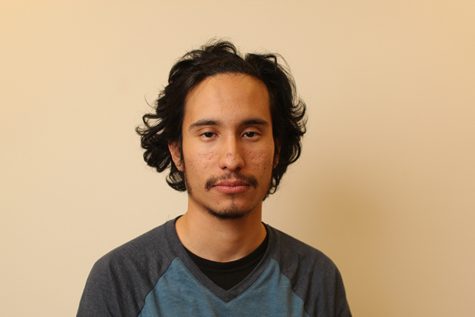Policy violations bring cameras into focus
District fails to notify students without signage
Sep 30, 2015
The district wide policy and procedure for security camera operations is months closer to being enacted, despite potential liability issues for current video monitoring throughout Contra Costa College due to the lack of proper signage for cameras displayed.
Drafted reports of the policy and procedure were disclosed during the Sept. 1, District Governance Council meeting and will be sent forth for final review by various employee groups such as faculty management and classified staff(s) before being submitted to the Chancellor’s Cabinet and the Governing Board, Chief Facilities Planner Ray Pyle said.
One stipulation currently de-emphasized by college departments before the policy and procedure are even activated is that nearly all cameras on campus contain no signage notifying students that they are being monitored.
A research report conducted by the National Institute of Justice for the US Department of Justice cites, “Signage can be an important legal component in the use of video cameras in schools.
It is important that the presence of video cameras not lead a person to believe he or she will be rescued if attacked. Dummy cameras should not be use in such an event.”
Brian Feinberg, a supervising attorney for the Law & Motion office of the Contra Costa County District Attorney’s office did not immediately respond to inquires made by this newspaper as of press time, Tuesday.
The security camera operating policy, known as district board policy 5037, states that in order to enhance security, deter crime, and protect property and the safety of members of the campus and public, CCCCD has determined that the use of video monitoring, recording or other visual digital recording equipment may prevent losses and aid in the law enforcement activities of the district Police department.
Business procedure 10.57 lists that the district Police department is authorized to use still cameras or video equipment to record events where there likely to be violations of college rules, regulations, policies, or violations of law.
According to The Advocate issue, Oct. 22, 2014, district approved cameras are set to be placed at both entrances of the college and the exterior of the Early Learning Center to which Pyle confirmed as accurate.
“They would be placed in positions where cars would be photographed and at the vehicular entrances of the school and the exterior entrances at the Early Learning Center,” Pyle said.
Within the new procedure all locations with security cameras will have signs displayed that provide reasonable notification of the presence of security cameras.
Further notification requirements state that at a minimum this must include primary building entrances. The placement of the signs and the text on the signs will be subject to the review and approval from the district Police Chief.
Another requirement would be that conspicuous public signage must be displayed at all camera locations or the entrance to a single facility, except at emergency or investigative locations.
There are an indefinite amount of cameras on campus, which contain no signage.
Buildings and Grounds Manager Bruce King said, “None of the cameras have signage except for shipping and receiving within (buildings and grounds).”
Once approved, one installation and camera request procedure lists that individual departments, programs, or campus organizations installing video security equipment shall submit a written request to their appropriate dean or manager describing the proposed location of security devices, justifying the installation, and identifying the funding source or sources for purchase and ongoing maintenance.
The locations, which have cameras setup, are— the Bus Transfer Center, Student Services Center, Buildings and Grounds, Computer Technology Center, Applied Arts Building, the Bookstore, Early Learning Center and the Library, Police Services Corporal Tom Holt said.
Police Services monitors the three cameras at the Bus Transfer Center and the six at Student Services Center but are currently undergoing relay feed issues, disabling Police Services from viewing footage.
Technology Systems Manager James Eyestone said the DVR for those cameras needs some attention and is currently working on correcting the problem.
Eyestone said generally speaking cameras are placed at cash handling locations and the biggest problem with multiple cameras setup is that is no centralized network in which, data recorded from these devices could be reviewed.
“The real problem with these different systems is for Police Services because whatever system you have, you may need to relay to the district level in case of an event of a crime and each system has different interfaces,” Eyestone said.
Early childhood education major Bianca Miranda said, “I think the school should be allowed to have cameras anywhere and they shouldn’t have to tell people that they’re there.”
One of the locations listed in the Oct. 22, article that had dummy cameras setup was the CTC building.
Computer information systems department Chairperson Robert Chan said he could not confirm the total amount of cameras in the building, which was lasted recorded as 16 nor desired to say which ones were, if any, dummy cameras out of security reasons.
Chan did say that the one of the biggest liabilities on campus are these cameras but that they could be taken down, once a centralized monitoring system is established.


